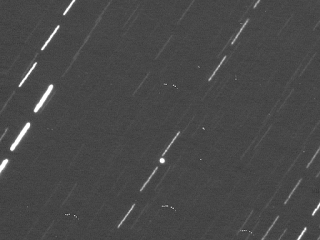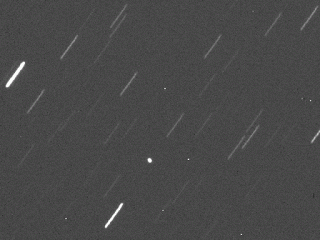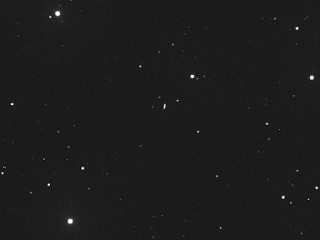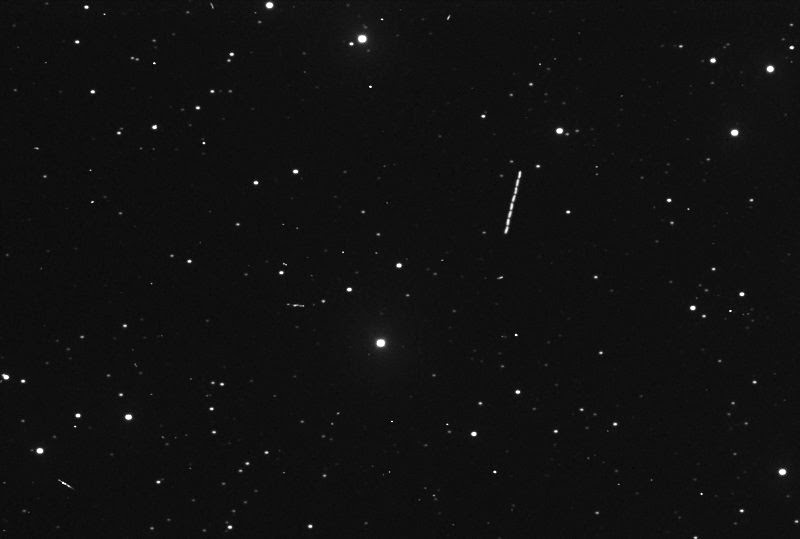| Online: | |
| Visits: | |
| Stories: |

| Story Views | |
| Now: | |
| Last Hour: | |
| Last 24 Hours: | |
| Total: | |
2004 BL86's flyby seen from iTelescopes (25 and 28 January 2015)
Thursday, January 29, 2015 6:03
% of readers think this story is Fact. Add your two cents.
 |
 |
| Near Earth Asteroid 2004 BL86 imaged on 25 January using iTelescope T9 at Siding Siring Observatory. 10×60 second Luminance images stacked using ImageJ and SUMMED. The asteroid is the obvious blob, all the stars are smeared as the scope tracks on the asteroid (the little dots are hot pixels). Click to embiggen. | 8 of 10 frames from the 25th animated. The stars stream past, the asteroid stays still and the hot pixels drift to the left. Click to embiggen. |
I manage to track Near Earth Asteroid 2004 BL86 with the Australian iTelescope T9 the day before closest approach. On the day of closest approach the scopes in the northern and southern hemispheres were both clouded out. At least I got to see it with my own scope.
 |
|
| Near Earth Asteroid 2004 BL86 imaged on 28 January using iTelescope T5 at New Mexico. 10×60 second Luminance images stacked using ImageJ and Maxed. The asteroid is the bunch of short lines, as this scope tracked on the stars. Click to embiggen. | 8 of 10 frames from the 28th animated. The asteroid moves as a short line because it is faster than the scope can track and the hot pixels flash in and out. Click to embiggen. |
After a couple of days of bad weather, the skies cleared for the New Mexico scopes, and I was able to get some nice shots. The apparent “wobble” in the asteroid is due to tracking, not any rotation of the asteroid.
Source: http://astroblogger.blogspot.com/2015/01/2004-bl86s-flyby-seen-from-itelescopes.html




